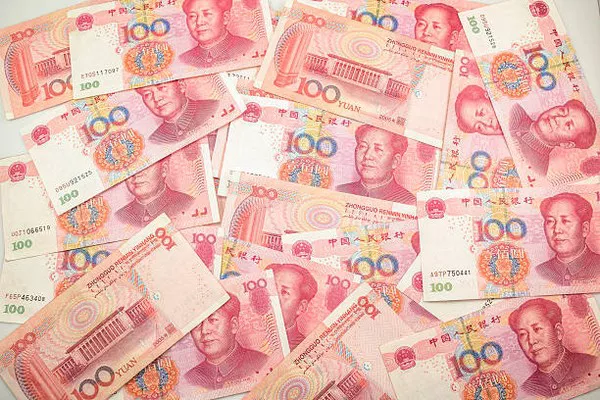In recent months, the Chinese Yuan (CNY) has experienced a notable decline in value against major currencies like the US Dollar (USD) and the Euro (EUR). This phenomenon, often referred to as a currency “crash” or depreciation, has sparked considerable interest and concern among economists, investors, and policymakers globally. To comprehend the complex factors driving this trend, it’s essential to delve into the economic, geopolitical, and structural dynamics at play within China and the broader international landscape.
Economic Context and Trade Dynamics
China, as the world’s second-largest economy, heavily relies on exports to fuel its economic growth. A key factor contributing to the depreciation of the CNY is the changing trade dynamics, particularly amid global economic shifts and trade tensions.
Trade Imbalances: China’s trade surplus has been shrinking, driven partly by the rising costs of labor and production within the country. This reduction in surplus weakens the demand for the CNY, exerting downward pressure on its value.
Trade Tariffs and Policy Uncertainty: Ongoing trade disputes, particularly with the United States, have led to tariff impositions and policy uncertainties. These factors can influence investor confidence in the Chinese economy and contribute to currency depreciation.
Monetary Policy and Central Bank Actions
The People’s Bank of China (PBOC) plays a crucial role in managing the value of the Yuan through monetary policy interventions. Understanding the PBOC’s actions and broader monetary policy environment provides insights into the Yuan’s recent performance.
Interest Rate Policy: Changes in interest rates set by the PBOC can impact the attractiveness of holding the Yuan relative to other currencies. Lower interest rates, for instance, might discourage foreign investors, leading to Yuan depreciation.
Currency Intervention: The PBOC’s direct interventions in currency markets, such as selling foreign reserves or adjusting exchange rate mechanisms, can influence the Yuan’s value. Recent policies aimed at stabilizing the economy amid external pressures may have contributed to the Yuan’s depreciation.
Structural Reforms and Economic Challenges
China’s economy is undergoing structural transformations aimed at transitioning from an export-driven model to one led by domestic consumption and innovation. However, these reforms can introduce short-term challenges affecting the Yuan’s value.
Debt Levels and Financial Risks: China’s corporate debt levels and shadow banking practices have raised concerns about financial stability. Efforts to address these risks may involve tighter credit conditions, impacting economic growth and currency performance.
Structural Shifts: Initiatives like the Belt and Road Initiative and the Made in China 2025 strategy signify China’s ambitions to reshape global trade and technology landscapes. While transformative, these initiatives can introduce uncertainties that influence investor sentiment and currency markets.
Geopolitical Factors and External Pressures
Beyond economic fundamentals, geopolitical tensions and external pressures can significantly impact a currency’s value. China’s relations with key trading partners and global events have implications for the Yuan’s performance.
US-China Relations: Escalating tensions between the US and China, spanning trade, technology, and security, have ramifications for the Yuan. The perception of geopolitical risks can affect capital flows and currency valuations.
Global Economic Conditions: Broader economic trends, including shifts in commodity prices, global interest rates, and investor sentiment, can influence the Yuan’s trajectory. Uncertainties surrounding the post-pandemic recovery and inflationary pressures are notable considerations.
Market Sentiment and Investor Behavior
Market sentiment and investor behavior play a critical role in determining currency movements. Sentiment-driven factors often interact with underlying economic fundamentals.
Risk Appetite: During periods of heightened risk aversion, investors may seek safer assets, potentially leading to outflows from riskier currencies like the Yuan.
Capital Flows: Foreign investment flows into China, driven by factors like interest rate differentials and economic prospects, can impact the Yuan’s value. Changes in capital mobility regulations can also influence currency dynamics.
Conclusion: Implications and Future Outlook
The depreciation of the Chinese Yuan reflects a confluence of economic, geopolitical, and market-driven factors. While short-term fluctuations are inevitable, understanding the underlying dynamics is essential for policymakers, businesses, and investors navigating the evolving global landscape.
Looking ahead, the trajectory of the Yuan will continue to hinge on China’s economic resilience, policy responses, and external developments. Mitigating risks associated with trade tensions, financial stability, and structural reforms will be crucial for stabilizing the Yuan and fostering sustainable economic growth in China and beyond. By monitoring key indicators and fostering international cooperation, stakeholders can navigate the complexities of currency dynamics and promote a stable global financial environment.


